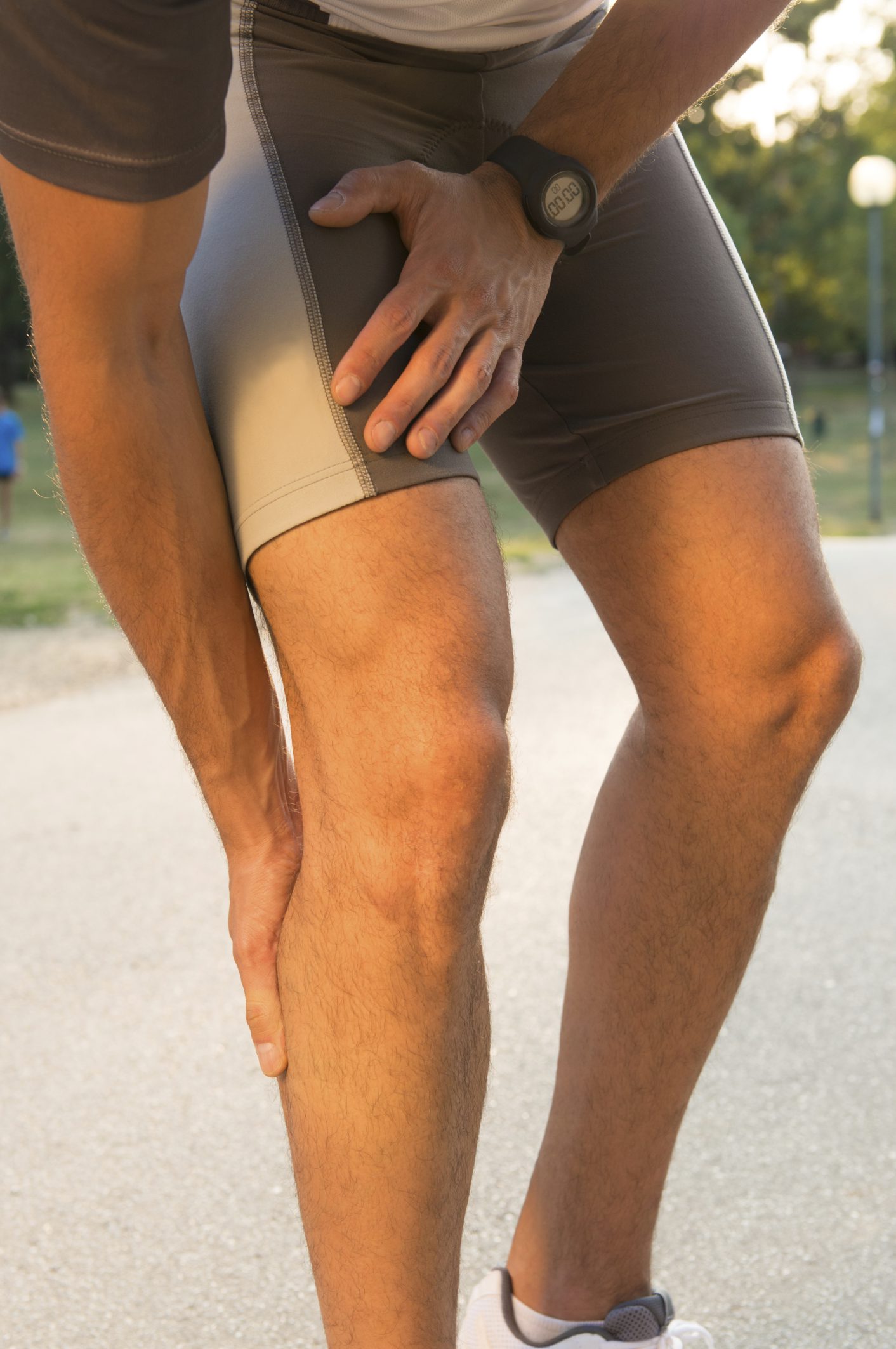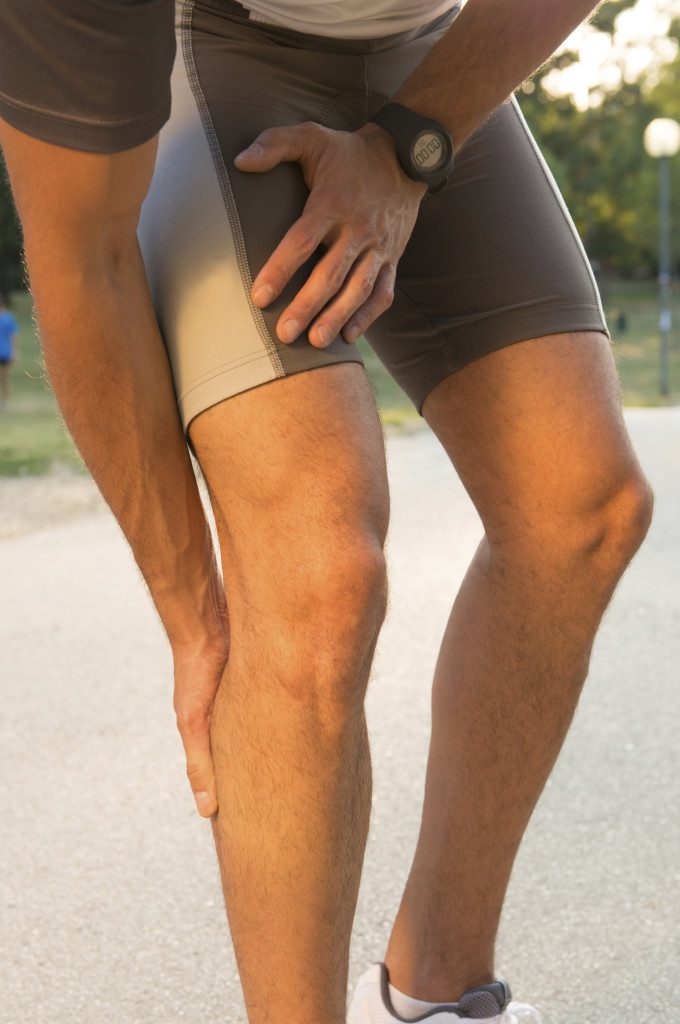Achilles Tendonosis: Micro-damage, mondo trouble

Overuse-related micro-tears in the Achilles tendon can cause serious problems for runners. Learn how to nip the injury before it hobbles your gait and derails your training plan.
By Martin Zollinger
Mark is 35 years old and has run several 10ks and a few half-marathons. This spring, he decided to run the ing Ottawa Marathon, and found a great training program online. A few weeks into the program, Mark noticed a dull pain above his right heel while running. It didn’t hurt during the rest of his activities, so he decided to continue training, hoping the pain would go away. A few weeks later, the pain grew more intense, and it hurt to take the first few steps after getting out of bed in the morning. Dejected, Mark started icing the heel, taking Advil, and reluctantly took a week off running. After a week of rest, he went for a run and, within a few hundred metres, that familiar pain in the heel returned.
If this scenario sounds familiar, you more than likely have had an Achilles tendon injury. This type of injury affects up to 20 per cent of runners, and can easily ruin your race season. Although most commonly seen in male athletes in their 30s, Achilles tendon injuries can strike anyone. Predisposing factors include too-rapid increases in distance, the wrong shoe and/or orthotic, faulty technique and tight calves. Ignore these injuries at your peril, as the Achilles tendon is a slow healer because of its poor blood supply, sometimes taking months to resolve completely.
The Achilles tendon is the largest and strongest tendon in the body, and is the common tendon of the gastrocnemius and the soleus muscles (commonly called the calf muscles), which attaches to the calcaneous in the foot. The most common Achilles overuse injuries occur either at the insertion of the tendon with the calcaneous or, more commonly, about 2–6 cm above this insertion, in the body of the tendon.
If you suspect an Achilles tendon overuse injury, squeeze and roll the tendon between your fingers, feeling for scar tissue nodules that may be tender. A doctor can perform a more specific test, or try this yourself at home:
- Let the affected foot and ankle relax.
- The tendon should be very sore when squeezed.
- Now, pull your toes up towards your head – the same squeeze should elicit very little or no pain.
- If the diagnosis is unclear, an athlete-focused chiropractor or physician can follow up with more specific tests, including diagnostic ultrasound and MRI.
Often labelled Achilles tendonitis, this type of overuse injury in runners is more accurately called Achilles tendonosis. The suffix “:itis” in the word tendonitis infers that it’s an inf lammatory injury, with swelling, redness, heat, pain and loss of function. In fact, the injury involves little or no inf lammation. The term tendonosis describes the true nature of the overuse injury, as the “osis” suffix refers to the breakdown of the tendon at a cellular level from micro-tears. When damaged this way, the tendon strands heal in a haphazard way, resulting in pain when put under tension, stressed, or touched. This new tendon tissue is often weaker, prone to re-injury, and can even rupture if not carefully rehabilitated. Most Achilles tendon injuries respond very well to conservative treatment. The following four-point plan will successfully manage most Achilles problems:
1. Resolve the Root Cause Look at your running gait and biomechanics to ensure proper technique, and use the right shoe type and fit, paying close attention to arch support and heel cup fit. It’s wise to decrease training volume slightly and avoid aggressive hill running while injured. A temporary heel-lift in your shoe can help take tension off the tendon while running.
2. Stretching the Kinetic Chain Limited ankle motion due to tight muscles means that, with every step, the Achilles tendon absorbs a greater load over a shortened range. A stretching program is critical, and should encompass the lower-leg myofacial chain that encompasses the plantar fascia, gastrocnemius, soleus and hamstrings. It helps to use moist heat on the muscles before stretching, and within a month you should see an increase of five degrees of ankle mobility. Optimally, ankle dorsif lexion (tilting the foot up toward the shin) should be 15 to 20 degrees.
3. Strength Training There is some excellent research on using strength training to help align injured tendons as they heal, with eccentric training giving the best outcome. Try this eccentric training exercise for the Achilles tendon: With a standing calf-raise machine, use your upper body or other leg to raise you onto the toe of the affected foot, then slowly lower your body, stretching the affected calf until it’s fully lengthened. For best results, use a fairly heavy weight.
4. Manual Therapy A good chiropractor or physiotherapist can use a combination of electromodalities and manual therapies to speed up healing. Ultrasound has been shown to promote faster healing and better organization of healing tissues, leaving the tendon with greater strength. Manual therapies (Graston Technique and Active Release Techniques) can help break up scar tissue deposits, increase blood f low, and promote normal tendon structure during healing.
Careful management of Achilles tendon injuries will let you to enjoy running throughout your life, and help prevent nagging soreness that could interfere with your non-running life.
Martin Zollinger is a physiotherapist at the REFORM Body Clinic in Ottawa.
This story appeared in a former issue of Canadian Running.



